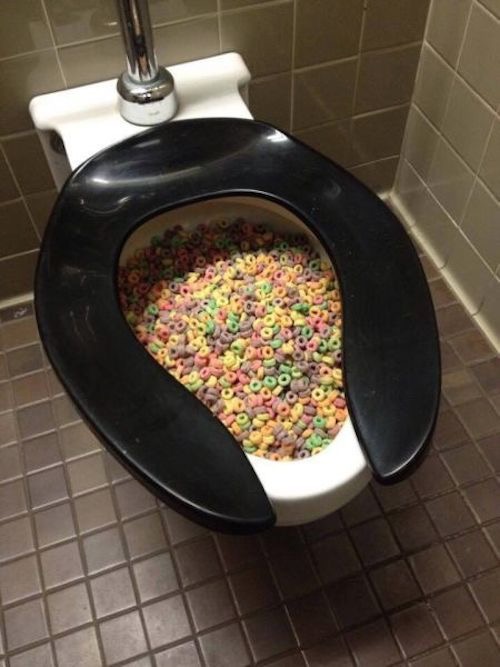This post in the next paragraphs on the subject of What Can Happen If You Flush Food Down the Toilet? is indeed enlightening. Read it for yourself and decide what you think about it.

Introduction
Many people are usually confronted with the predicament of what to do with food waste, specifically when it involves leftovers or scraps. One typical inquiry that emerges is whether it's alright to flush food down the toilet. In this post, we'll delve into the reasons why people could think about flushing food, the repercussions of doing so, and different methods for appropriate disposal.
Reasons why individuals may think about purging food
Absence of recognition
Some people may not recognize the possible harm triggered by flushing food down the bathroom. They may mistakenly believe that it's a safe practice.
Ease
Flushing food down the toilet may seem like a quick and very easy solution to taking care of unwanted scraps, particularly when there's no neighboring garbage can readily available.
Idleness
In many cases, people might just pick to flush food out of large negligence, without taking into consideration the repercussions of their activities.
Effects of flushing food down the toilet
Environmental impact
Food waste that ends up in rivers can contribute to pollution and injury aquatic ecosystems. Additionally, the water made use of to purge food can strain water sources.
Plumbing problems
Purging food can bring about stopped up pipelines and drains, triggering expensive pipes repair work and troubles.
Sorts of food that must not be purged
Fibrous foods
Foods with coarse textures such as celery or corn husks can get entangled in pipes and create blockages.
Starchy foods
Starchy foods like pasta and rice can absorb water and swell, leading to blockages in pipes.
Oils and fats
Greasy foods like bacon or cooking oils should never be flushed down the bathroom as they can strengthen and create blockages.
Proper disposal techniques for food waste
Using a garbage disposal
For homes geared up with waste disposal unit, food scraps can be ground up and flushed with the pipes system. Nonetheless, not all foods are suitable for disposal in this fashion.
Recycling
Certain food packaging materials can be recycled, minimizing waste and decreasing environmental effect.
Composting
Composting is an eco-friendly way to deal with food waste. Organic materials can be composted and used to improve soil for gardening.
The importance of proper waste management
Minimizing environmental damage
Appropriate waste monitoring methods, such as composting and recycling, aid minimize contamination and maintain natural deposits for future generations.
Safeguarding plumbing systems
By preventing the method of flushing food down the commode, home owners can prevent costly plumbing fixings and maintain the stability of their pipes systems.
Verdict
Finally, while it might be alluring to flush food down the toilet for comfort, it's important to understand the prospective repercussions of this action. By embracing appropriate waste monitoring techniques and disposing of food waste properly, people can add to much healthier pipes systems and a cleaner environment for all.
FLUSH FOOD DOWN THE TOILET?
FLUSHING FOOD CAN CAUSE BLOCKED DRAINS IN YOUR HOME
All of the plumbing fixtures in your home are connected to the same sewer pipe outside of your home. This outdoor sewer pipe is responsible for transporting all the wastewater from your home to the Council sewer mains. Even small pieces of food that go down the kitchen sink can cause problems for your sewer. It should therefore be obvious that flushing larger bits of food, such as meat, risks a clog in either the toilet itself or the sewer pipes. Flushing greasy food is even more problematic because oil coagulates when it cools, coating the interior lining of your pipes.
THE TOILET IS NOT A BIN
Food isn’t the only thing that people shouldn’t be flushing down the toilet. People use the toilet to dispose of all kinds of things such as tampons, makeup wipes, dental floss, kitty litter and even underwear. Water goes to great lengths to educate residents about the high costs and stress placed on wastewater treatment systems simply from people flushing the wrong stuff down the toilet. It costs taxpayers millions of dollars each year, and homeowners thousands in blocked drain repairs.
FLUSHING FOOD IS A WASTE OF WATER
Flushing food is a waste of our most precious resource - water. In June this year Level 1 water restrictions were introduced to protect water supply from drought conditions. Much of New South Wales continues to be affected by prolonged drought with recent figures revealing up to 97 per cent of the state remains in drought. Depending on whether you have a single or dual flush toilet, every single flush uses between five and 11 litres of water. In the current climate this is a huge amount of water to be wasting on flushing food that should be placed in the bin (or better yet, the compost).
https://www.jabplumbingsolutions.com.au/blog/can-you-flush-food-down-the-toilet

Do you appreciate reading up on Flushing Food Down the Toilet?? Try to leave a remark directly below. We will be happy to listen to your opinions about this entry. We hope that you come back again in the near future. Are you aware of another person who is excited about the subject? Do not hesitate to promote it. Thank-you for going through it.
Schedule Services